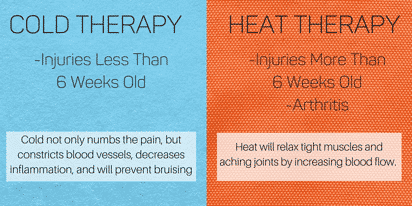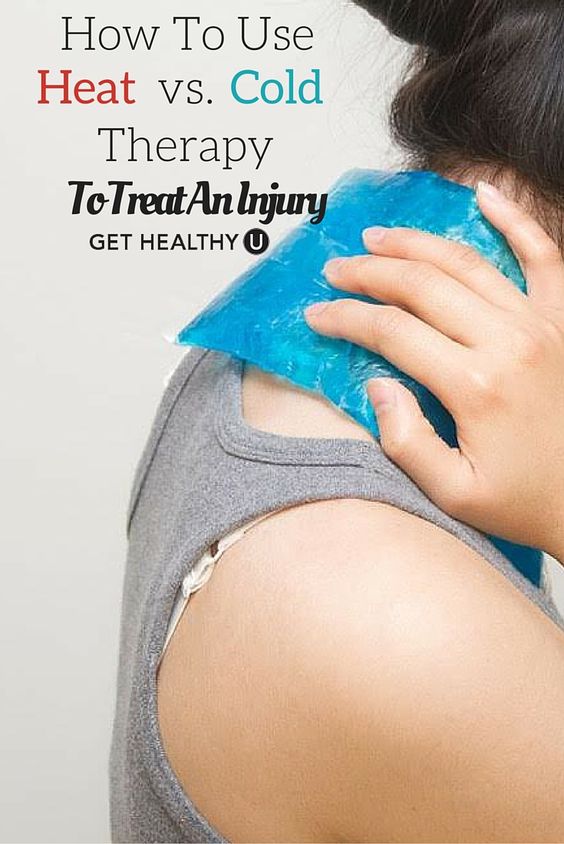This post contains affiliate links. Please see our disclosure policy.
When we work out, we have the best of intentions: to get stronger, lose weight, or simply improve our attitude for the day.
But injuries are still bound to happen, whether from performing moves improperly, overextending ourselves through repetitive use of certain muscles, or falling and straining a muscle.
So should you use heat or cold therapy to treat your injury?
Below I’m breaking down the difference between new and old injuries and what to do to recover from each—so you can get back to your workouts pain-free.

When To Use Cold Therapy To Treat Injury
New Injuries (Acute Pain)
For injuries that are less than six weeks old, you’re looking at “acute pain” at this point. Think pulled muscles, twisted ankles or a tweaked back.
For these new injuries, you’ll want to use cold therapy: whether by applying ice, or a cooling gel pack.
- Ice not only numbs the pain but will decrease inflammation and swelling.
- You do not want to use heat to treat acute injuries, because it can increase inflammation, which will delay your healing.
When To Use Heat Therapy To Treat Injury
Old Injuries (Chronic Pain)
For injuries that are more than 6 weeks old and still hurt, you’re dealing with chronic pain. For these types of injuries—or arthritis—you’ll want to use heat.
In addition, tight, achy muscles and joints react well to heat. I personally use heat on my low back regularly in the morning to improve mobility.
- Heat works best for chronic pain because it increases blood flow and helps relax and soothe those tight or painful joints.
- It’s best to apply heat before a workout if you have chronic pain, not after, as that can be more aggravating to your muscles.




It’s good to know that the application of cold or heat really depends on how long you’ve had the injury for. I found it especially helpful how you mentioned that ice is best for new injuries since it will decrease inflammation. I’d imagine most physios use cold therapy since a lot of their patients likely have acute injuries they want attending to.
If cold therapy is used for treating acute injuries then why are players after getting injured rubbed with deep heat and ointments that generate heat when rubbed?
Not all the time. Ice packs are put on Sprained ankles. Players take ice baths after the game. Lingering or chronic pain (which is player specific of course) demands heat therapy.
I personally use both when reducing strain or coming back from an injury. When playing football after practices I would take ice baths and also use our hot tub to reduce the strain on my legs for the most part and soreness in my upper body.
That’s awesome – I also use infrared light therapy – learn more about that here – it’s different than regular heat – https://gethealthyu.com/infrared-light-therapy/